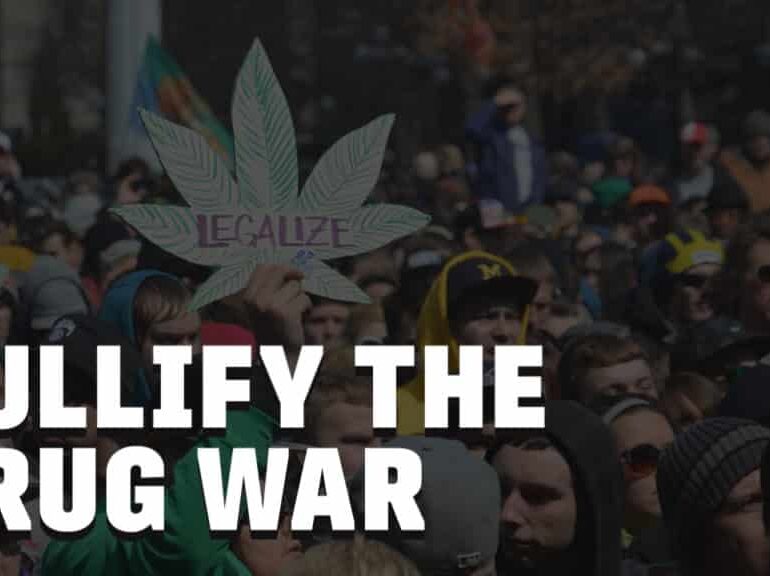
Nullification Through Human Action: Record Number of People Using Marijuana Despite Federal Prohibition
By: Mike Maharrey
More and more people are nullifying federal marijuana prohibition through individual human action.
Cannabis use has risen to record levels with more people now smoking marijuana than cigarettes. According to a Gallup poll, 16 percent of Americans reported using marijuana. That was up from 12 percent last year and more than doubles the all-time low of 7 percent in 2013.
Only 11 percent of the people polled reported smoking cigarettes in the last week.
Nearly one-third of adult respondents under the age of 35 reported smoking marijuana. Nearly half (48%) of those polled said they have tried pot at some point in their lifetime. That’s double the number who admitted to using marijuana in 1977.
Meanwhile, the federal government still claims that marijuana is completely banned in the U.S.
Under the federal Controlled Substances Act (CSA) passed in 1970, the federal government maintains a complete prohibition of marijuana. Of course, the federal government lacks any constitutional authority to ban or regulate cannabis within the borders of a state, despite the opinion of the politically connected lawyers on the Supreme Court. If you doubt this, ask yourself why it took a constitutional amendment to institute federal alcohol prohibition.
It’s pretty clear the feds have lost that battle.
To date, 37 states have legalized marijuana for medical use and 19 states have legalized cannabis for general adult use. This is significant because FBI statistics show that law enforcement makes approximately 99 of 100 marijuana arrests under state, not federal law. When states stop enforcing marijuana laws, they sweep away most of the basis for 99 percent of marijuana arrests.
Furthermore, figures indicate it would take 40 percent of the DEA’s yearly budget just to investigate and raid all of the dispensaries in Los Angeles – a single city in a single state. That doesn’t include the cost of prosecution. The lesson? The feds lack the resources to enforce marijuana prohibition without state assistance.
No matter what they say, the federal government clearly finds itself in a position where it simply can’t enforce prohibition anymore.
State and local political action have opened the door to nullifying federal cannabis prohibition in practice and effect, but the real power comes from the action of individuals.
The fact that so many people find value in using cannabis and are willing to do it no matter what the feds say is the real power behind this movement.
California was the first state to legalize medical marijuana with the passage of Prop. 215 in 1996. But of course, people in California were already using, buying, growing and selling cannabis for both medical and recreational purposes long before voters approved that ballot measure. In fact, human action drove this political action.
State legalization in 1996, even with its limited medical scope, cracked open the door for more, and the market responded. Today, Californians have thrown that door wide open. They now use, buy, grow and sell marijuana in even larger numbers. Businesses have taken root in communities, and farmers have embraced the crop.
From there, the movement spread to other states.
Colorado, Washington state, Oregon and Alaska were the first states to legalize recreational cannabis, and California, Nevada, Maine and Massachusetts joined them after ballot initiatives in favor of legalization passed in November 2016. Michigan followed suit when voters legalized cannabis for general use in 2018. Vermont became the first state to legalize marijuana through a legislative act in 2018. Illinois followed suit in 2019. New Jersey, Montana and Arizona all legalized recreational marijuana through ballot measures in the 2020 election. In 2021, New York, New Mexico, Virginia and Connecticut legalized marijuana through legislative action, and Rhode Island legalized cannabis for adult use in 2022.
Legalization will be on the ballot in several more states this November, including Missouri and South Dakota.
As marijuana becomes more accepted and more states, localities, and individuals simply ignore the federal prohibition, the feds become less able to enforce their unconstitutional laws. After more than two decades of state, local and individual resistance and nullification, the federal government’s unconstitutional prohibition of cannabis is coming apart at the seams.